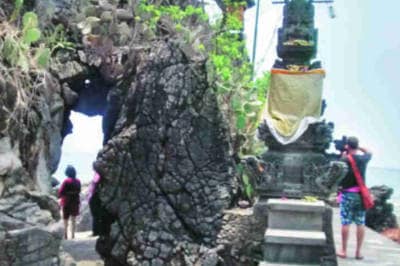The largest city on the island is the capital Mataram. “Almost 60 per cent visiting Lombok are domestic tourists and 40 per cent are international travellers. Lombok has three big potential for tourism – culture, nature and special interest,” said Harris. MICE tourism facilities have also grown here in the last five years.
While the island is predominantly inhabited by Muslims, before the advent of Islam the inhabitants were primarily Hindus and Buddhists. There are still many historic Hindu temples like the Batu Bolong temple which is built on a rock. The destination is also home to people practicing Wetu Telu, which is a mix of Islam, Hinduism and animism. Visitors can interact with the Sasak village of Sade in Lombok, where people practicing Wetu Telu reside. They can take a walk around the village, buy local craft items and also watch a cultural performance. Sasak Traditional Tour is a combination of nature and culture including visit to museum, pottery making village, beach visit, etc. Mount Rinjani is an active volcano in Lombok, which is one of the major tourism attractions and a highlight of adventure tourism activities that the destination offers.
Lombok is well connected with Bali – 35 minutes flight and 3.5 hours by ferry.
